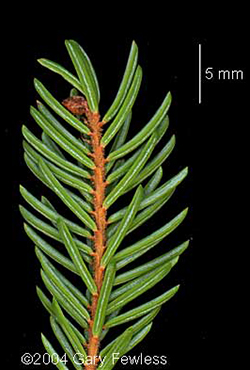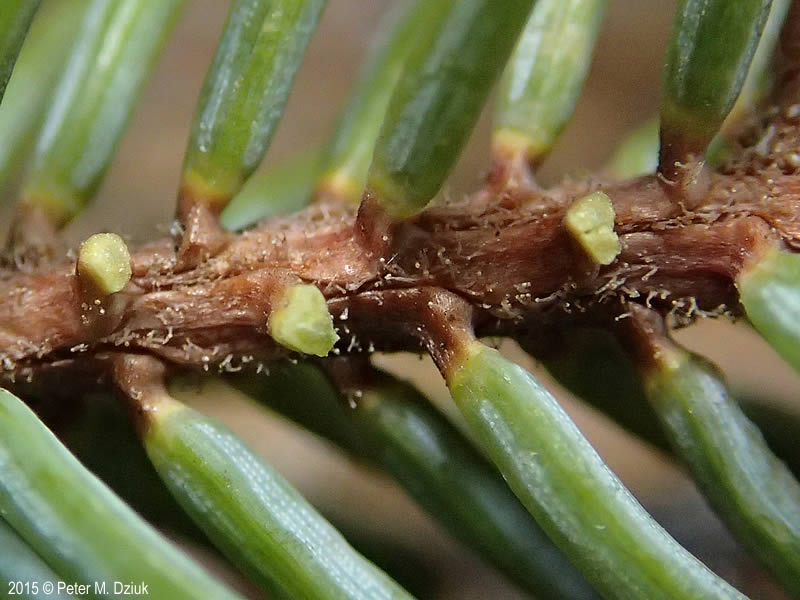Plant Form & Function II
Manitoba Conifers
-1.jpg) There
are ten species of conifers native to Manitoba. Seven species belong to the
Pine family and three species belong to the Cypress family. Eight of the Manitoba
conifers are trees while two are shrubs.
There
are ten species of conifers native to Manitoba. Seven species belong to the
Pine family and three species belong to the Cypress family. Eight of the Manitoba
conifers are trees while two are shrubs.
- Cypress Family -
members can be distinguished from the Pines in that they have very small scale-like
leaves, or, if leaves are needle-like, the ovulate cone develops into a blue
fruit-like berry when mature.
- White Cedar (Thuja occidentalis) - occurs
widely in swampy areas of the province. The leaves are small, scale-like,
closely appressed and the cones are small and made up of 8-12 scales.
The crown of the tree does not end in a pointed apex, but is somewhat
rounded.
- Junipers - two species of Juniper are found in all
parts of the province, and usually in drier areas. Creeping Savin
Juniper (Juniperus horizontalis) and Common
Juniper (Juniperus communis) are both low-growing shrubs
and are easily identified by their blue, berry-like cones. The flavouring
for Gin is derived from Juniper berries.
- Pine Family
- represented by four genera, Pine (Pinus), Larch (Larix),
Spruce (Picea) and Fir (Abies).
- Pines - have clusters of 2-5 needle-like leaves on
short shoots.
- Jack Pine (Pinus banksiana) - the most
common pine in the province. Leaves are 5 cm long and occur in clusters
of 2. It is found in dry habitats throughout the forested areas of
the province.
- Red or Norway Pine (Pinus
resinosa) - leaves are 7-18 cm long, and occur in clusters of
2. It is found in the south-eastern part of the province in dry habitats.
- White Pine (Pinus strobus) - leaves occur
in clusters of five. It is found only in the extreme south east corner
of the province in dry habitats.
- Larch or Tamarack (Larix laricina)
- the only native conifer which is deciduous. The needle-like leaves turn
yellow in the fall and drop off. New leaves appear in the spring in clusters
on short shoots. It is a common species in wet forested areas of the province.
- Spruces - conical in shape, that is, the crown terminates
in a sharp apex, and the short needle-like leaves appear to be arranged
spirally along the stem. White spruce (Picea glauca)
occurs in highland areas, while Black Spruce (Picea
mariana) generally occurs in a low-lying swampy terrain.
- Firs - Balsam fir (Abies balsamea) is native
to Manitoba. The leaves are flat, softer than those of spruce and appear
to be arranged in two rows along the stem. The bark is more or less smooth
with blisters containing a sticky fluid or pitch. It is common in moist
areas of the mixed forest.
*** Make sure you are able to identify the above mentioned
species using the dicotomous key provided in your lab manual. ***
For the assignment identify the Manitoba Conifer shown below. - This is the species labeled C






-1.jpg) There
are ten species of conifers native to Manitoba. Seven species belong to the
Pine family and three species belong to the Cypress family. Eight of the Manitoba
conifers are trees while two are shrubs.
There
are ten species of conifers native to Manitoba. Seven species belong to the
Pine family and three species belong to the Cypress family. Eight of the Manitoba
conifers are trees while two are shrubs.

![]()
